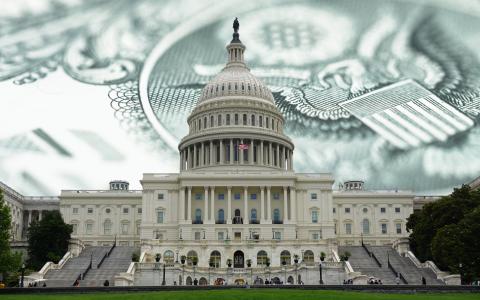
The burgeoning US debt is on track to soon eclipse defense spending in terms of interest payments, a development underscored by Capital Group.
Economist Darrell Spence from the renowned US asset manager highlighted in an October research note the critical evolution of US debt dynamics. According to projections, within the next five years, the nation's net interest payments are anticipated to outstrip its defense expenditure.
Spence pointed out that, following the Congressional Budget Office's projections, the US's debt burden could see its net interest payments surge from below $500 billion to an astonishing $1.4 trillion by 2033. This shift, where interest outpaces defense spending, poses a significant concern for policymakers, especially in light of President Joe Biden's recent commitment to request over $100 billion to support Israel and Ukraine.
On Wall Street, debt has become a paramount issue this year. Lawmakers narrowly averted a crisis by raising the government's borrowing limit in a last-minute agreement in May. Meanwhile, Treasury bonds have experienced one of the most severe sell-offs in market history.
The US government's liabilities crossed an astounding $33 trillion on September 18, with a subsequent increase to $33.64 trillion just a month later, reflecting an average daily growth of $20 billion. Spence suggests that America's debt is nearing a level that could precipitate economic turmoil.
He explains that debt becomes problematic when a country's interest rates exceed its economic growth rate, causing the debt to expand autonomously if the revenue generated by the economy is less than the interest payments. Until recently, the US was well below this critical threshold, but that is no longer the case.
The escalating debt could compel the government to implement tax hikes, trigger further bond market sell-offs, and necessitate the Federal Reserve to maintain elevated interest rates. This scenario is likely to slow economic growth, as government expenditure shifts towards servicing debt. For investors, this realignment could translate into diminished stock market returns over time, considering the strong historical correlation between GDP growth and market performance.



